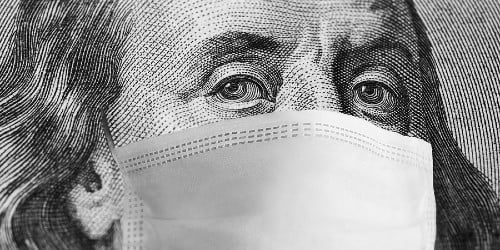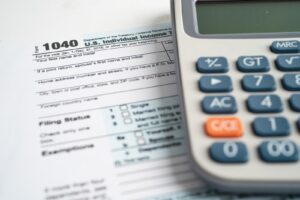The SBA’s $349 billion Paycheck Protection Program, known as the PPP loan program for small business owners, has run out of money less than two weeks after it was launched.
According to the Small Business Administration, the agency approved 1.66 million loans from 4,975 lenders before the cash dried up on Thursday, April 16, 2020 – just 13 days after the PPP loan initiative began on April 3.
I’m happy for those who got funded, especially companies that will keep employees on the payroll.
But if you’re like me, you’re also disappointed that you didn’t get a piece of the pie. (And yes: I did apply for a PPP loan. My application is in limbo as of this writing).
Nonetheless, just because this particular much-needed source of funding hasn’t come through, that doesn’t mean other alternatives don’t exist.
So what are your options if you’re among the 30 million small business owners across America dealing with the financial fallout from the coronavirus crisis?
Realistically, most entrepreneurs will have some tough decisions to make.
For those who want to stay afloat during the COVID-19 emergency – and not close up shop forever, or even declare bankruptcy – your have at least 7 primary options to drum up money and keep offering your products or services.
Here’s what you can do if you need cash fast to support you or your business while the coronavirus disaster continues.
- File for Unemployment Benefits
The $2.2 trillion CARES Act expanded unemployment insurance in several ways, including making more people eligible for unemployment benefits.
While the exact unemployment compensation varies from state to state, the average weekly benefit is around $380 a week. The CARES Act provides an extra weekly federal unemployment benefit of $600 a week – so most people can net about $1,000 a week from unemployment pay.
Plus, unlike in the past, self-employed individuals, 1099 workers, freelancers and independent contractors and are all now eligible for unemployment assistance because of the coronavirus outbreak.
No wonder, then, that a record 22 million Americans sought unemployment benefits in the first month alone after President Donald Trump declared coronavirus a national disaster.
- Tap Your Retirement Funds
The Coronavirus Aid, Relief and Economic Security Act, better known as the CARES Act, loosened the rules for Americans who need to access retirement funds held in accounts such as IRAs and 401k plans.
In a nutshell, you can now take a loan of up to $100,000 from your retirement account (up from the previous limit of $50,000), without tax consequences. You then pay yourself back the funds borrowed.
You can also take a penalty-free withdrawal of up to $100,000 from your 401K assets, but that’s not as attractive. While you don’t have to pay the 10% penalty that the IRS normally assesses to those under the age 59 ½, you will have to pay ordinary income taxes (over a 3-year period) on any distribution.
The other main downside, of course, is that anytime you raid your retirement money you run the risk of diminishing your future financial security.
So think long and hard before emptying the funds you’ve been stashing away for your Golden Years.
- Seek Employer Tax Credits
The CARES Act, and a previous stimulus measure, called the Families First Coronavirus Relief Act, each provided a range of COVID-related direct payments to individuals, as well as tax credits to self-employed persons.
For instance, if you’re quarantined, or diagnosed with coronavirus/COVID-19, federally-mandated sick pay covers 100% of your salary up to $511 a day for 10 days, or $5,110 total. An equivalent tax credit in this amount is available for self-employed individuals.
Likewise, 10 weeks worth of medical leave pay is offered to those who are sick with the virus or people who are taking care of kids whose schools or daycares have been shut down due to coronavirus. Medical leave benefits cover 2/3 of your salary up to $200 a day and a cap of $10,000. Business owners can get this as a tax credit too.
There’s also an employee retention tax credit equal to 50% of qualified wages that employers pay their employees (including yourself, if you’re on the payroll). The maximum amount of qualified wages per employee is $10,000 for 2020, so your maximum credit would be $5,000.
You may be wondering how these tax credits can help now – when you need money in you bank account pronto, not next year when you’d typically file your tax returns.
Well, small business owners can benefit from or access these credits now by:
- not paying federal payroll taxes that would normally be currently due; or
- filing out various IRS forms and filing for the credits upfront with the IRS, and then getting a check/refund from Uncle Sam.
It’s the latter tactic that could give you major relief over the medium-term horizon.
Unfortunately, the tax credit payouts aren’t super speedy. But the feds say that if you qualify: you can expect a tax credit refund check within 90 days of your filing.
Depending on your goals and other resources, using this tax credit strategy may be helpful to business owners with multiple employees – or even to sole proprietors and/or mom and pop businesses, that could use a cash injection a couple months from now.
- Consider Utilizing Home Equity
Those who have significant equity in their homes may be able to tap into the value of their properties and use the cash for business needs.
Just beware that many banks are tightening lending standards.
So you’ll need to not only have the required equity (about 10% to 20% or more) in your property, you’ll also need to have a decent credit score and a manageable debt-to-income ratio too.
- Lean on Your Credit Cards or Credit Lines
Speaking of your credit rating, many small business owners already self-fund their operations in large part with credit.
Amid the COVID-19 downturn, more individuals will undoubtedly be forced to turn to their personal or business credit cards, or even existing business lines of credit in order to pay various expenses and keep their enterprises humming.
A word of caution: if you draw down on a business line of credit, or start paying certain bills with plastic, don’t run up so much credit card debt that your bills become unmanageable once the coronavirus pandemic ends.
- Wait Until Congress Approves New Funding
Treasury Secretary Steven Mnuchin has asked Congress for an additional $250 billion funding to bolster the PPP loan program, a request that has been echoed by Republicans.
Democrats are onboard with supporting small businesses. However, they are pushing to ensure that the next round of money specifically earmarks at least some funding for minority entrepreneurs and women-owned businesses.
The two sides are also wrangling over whether to include extra financial support for hospitals, healthcare workers and state governments in a “Phase 4” stimulus bill.
There’s no telling if and when legislators in Washington, D.C. will strike a deal. But given the urgency of this crisis, both parties say they want to supply more funding to America’s small businesses sooner rather than later.
So if you didn’t get that desired PPP loan during the first round, one fall-back strategy is to hope for the best from Congress – and simply keep your PPP loan application on file with the bank, credit union or fintech institution you’ve already used to apply for a Paycheck Protection Program loan.
- Negotiate With Creditors and Vendors
Finally, depending on your industry and your particular circumstances, you may be able to negotiate various forbearances, deferments or payment arrangements with your creditors and vendors.
Right now, most institutions and organizations are extending some level of payment flexibility given the magnitude of COVID-19 and the hit that nearly all industries have taken amid this crisis.
Again, none of these options are ideal. And each course of action has its own pros and cons.
But hopefully, the ideas above will help you to think through and evaluate some of your other options now that the initial funding for the PPP loan program has run dry.
Be sure to also read the other COVID-19 and coronavirus-related content here on AskTheMoneyCoach.com to help you get through these tough economic times.
Also, sound off here on your own business survival ideas and strategies in order to help your fellow entrepreneurs.
What are you doing as a small business owner to stay afloat in the era of coronavirus?








